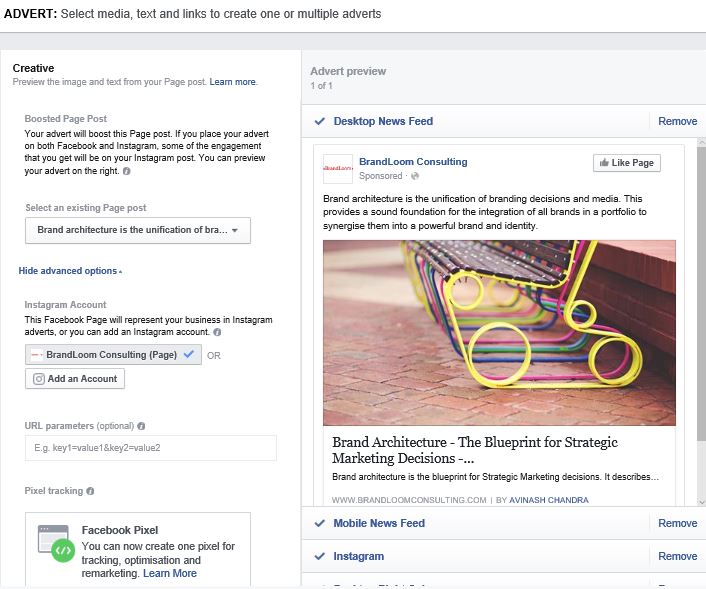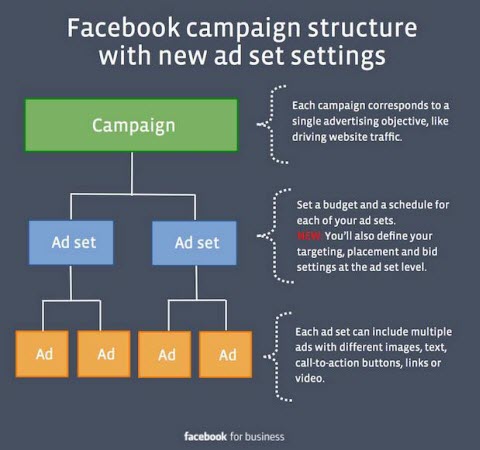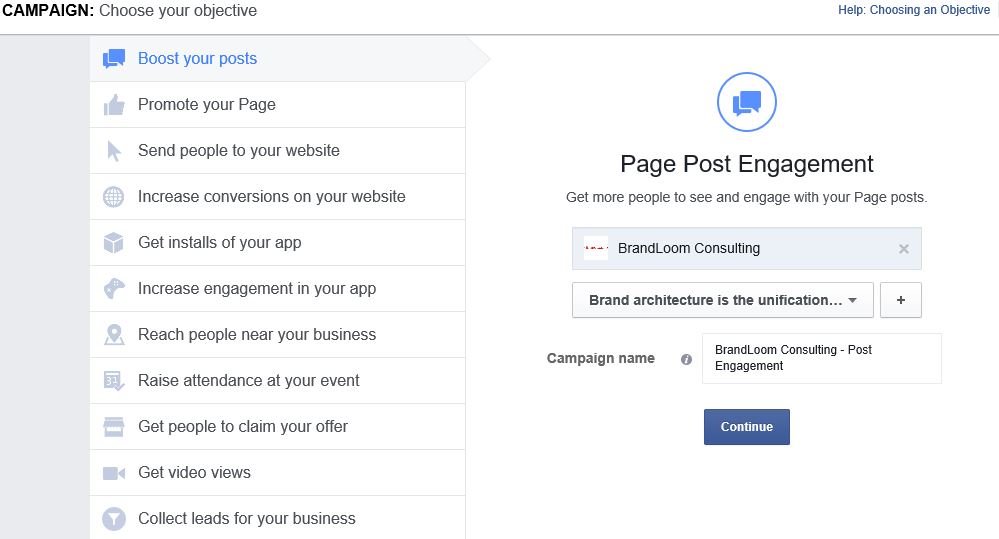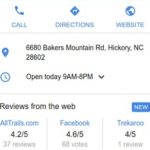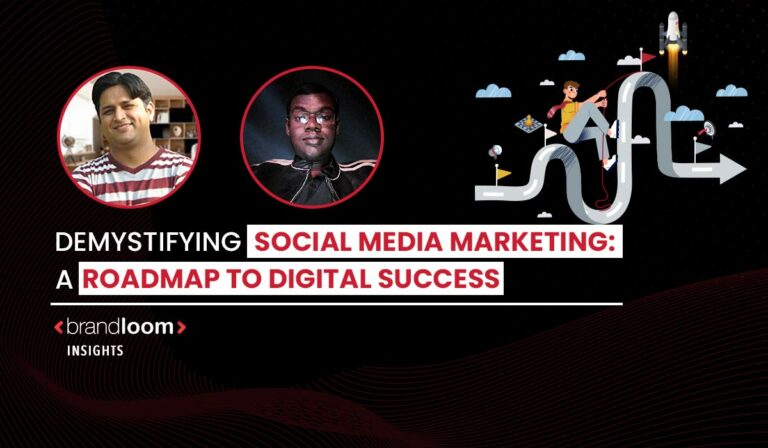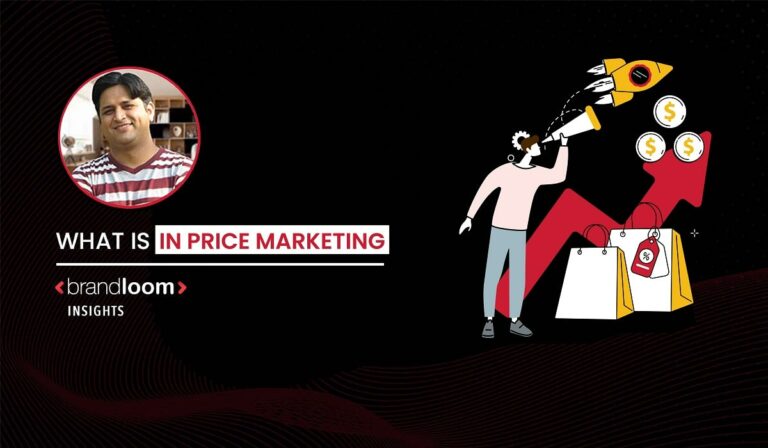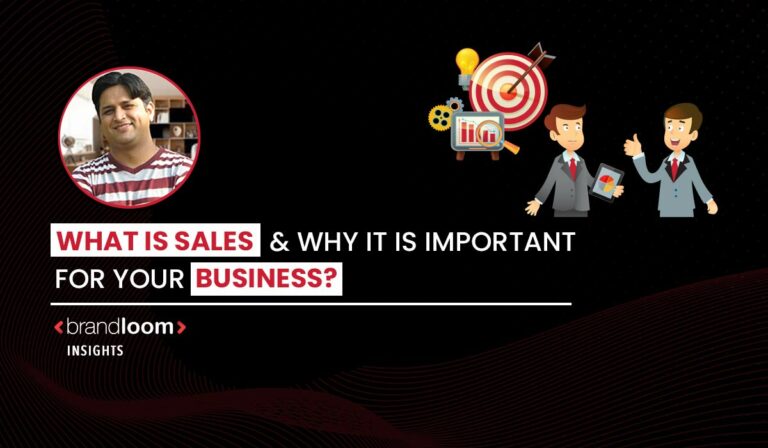Do you want to advertise on Facebook? If you are a Brand owner, your Facebook Business page is your second most important online real estate and the second most important pillar of your Online Marketing Strategy. Believe it or not managing it well could result into tremendous advantage for your brand and business in the long run. Experts believe that in future Facebook will draw largest amount of ad spends online. Therefore in this article you’ll learn all about how to effectively advertise on facebook.
However, before you start creating advertisements in Facebook, please ensure that you create a business account. Please note – that it is not mandatory to create a business account, however Facebook user accounts only get a single personal ad account. If you need additional ad accounts for other users you will need Facebook Business Manager account. Business Manager is a self service tool that offers more business features so your clients may be already using it. Here is a guide to help you effectively use your Facebook Business Manager account.
OK, so now you know how to effectively use your Facebook Business account to add all the pages you manage. Now login to your your Business Manager account and this is what you will see:
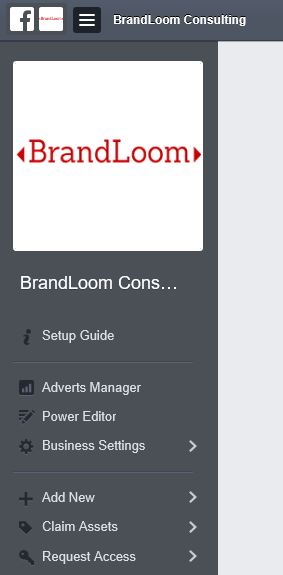
Now click on the adverts Manager tab. The below screen will open
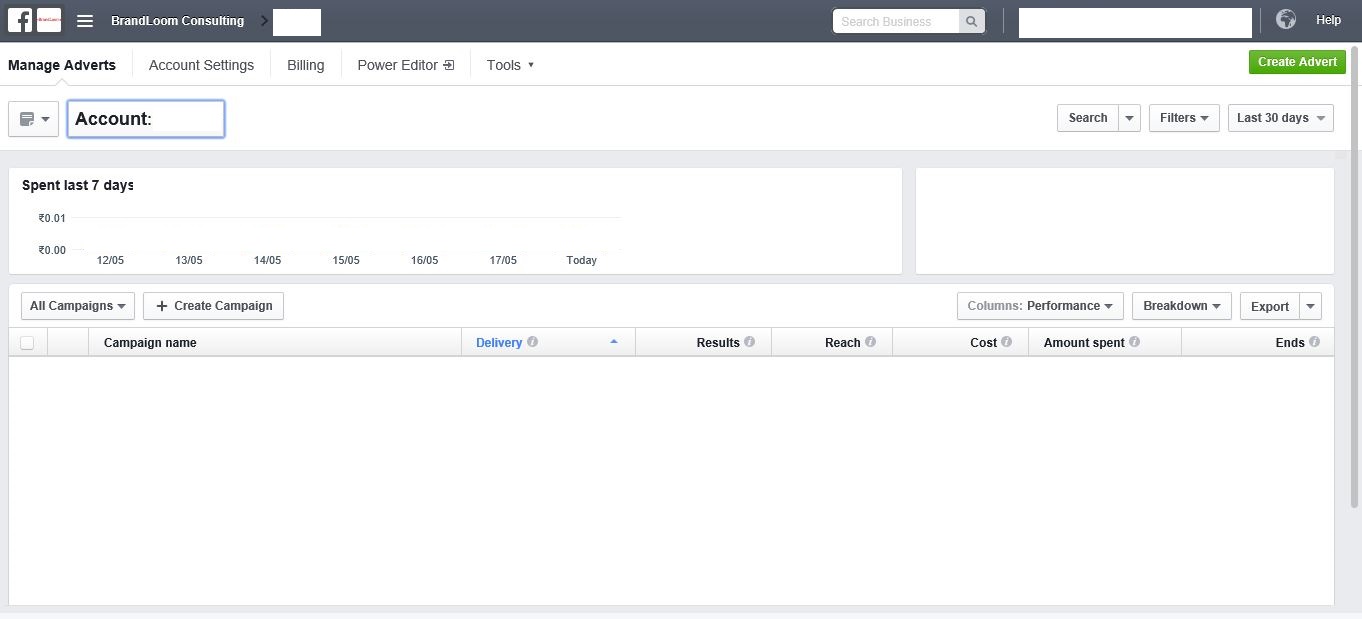
Learn How to use Facebook Adverts Manager Account
Once you land on the Facebook adverts Manager Account, you will see a clearly laid down page with top Menu. The menu items are: Manage Adverts, Account Settings, Billing, Power Editor and Tools. You will also see a tab to “Create Advert” on the right hand corner in Green.

Step 1: Navigate Facebook Adverts Manager Account
For navigation, you will find the choices at the top along with Tools drop down menu. Right below the Top Menu you can access previously saved reports, using the icon that looks like a spreadsheet. For those who are admins of multiple Facebook ads accounts, the Switch Accounts drop-down is right next to it.
Below the saved reports is the new visual representation of your daily ad spend from the previous 7 days. Below the Ad Spend area are your Campaigns by default. However, you can switch your view to the Ad Set or Ad View from the drop-down menu.
Step 2: View Ad Sets and Ad Results
This is where you will in a graphical view, what is happening with each ad or ad set in terms of costs, clicks, click-through rate, etc. The reports are incorporated into the main viewing area at each level of Campaign, Ad Set, and Ad. Customize the columns you see to get the data you want to view.
From the Ads Manager main menu, click on an individual campaign name to drill down into the ad sets and ads that are below that individual campaign. Once you get into the campaigns and ad set, mouse over certain spots in the graph or customize the columns you view to get more information about the results.
Facebook’s default view is the Performance level, but you can set whatever default group you want to view from the drop-down menu. Also customize the columns and set whatever group of columns as the default view for your account.
To customize your column view, first select Customize Columns. Then select the columns you want in your default view (for example, if I have an ad with a conversion pixel, I add Website Actions and Cost of Website Actions). Save that column preset with a custom name. Now set the new column preset view as the default going forward.
Step 3: Find Facebook Ad Tools
The Tools drop-down menu has the Audiences (also known as Custom Audiences), Audience Insights, Conversion Tracking, Pages, the new Image Library, an App Ads Helper and access to Advertiser Support.
Many people don’t realize that you can create and access all of your custom audiences (email uploads, website retargeting audiences and lookalike audiences) right from the Ads Manager. You don’t need to use Power Editor to access and create these audiences.
Conversion Tracking helps you set up custom pixel to track particular actions on your website (email opt-ins, sales and traffic for retargeting).
The Image Library holds all of the ads you have uploaded. You can easily add new images to the Image Library to use later by clicking Upload Images.
Step 4: Create Facebook Ads
To create an ad, click the green button in the upper-right corner of the Ads Manager. If you click Create Ad Set or Create Ad underneath any of the campaigns or ad sets you have navigated to in the Ads Manager, you will create ads underneath that preset campaign or ad set. We will further discuss this below.
Step 5: Set Up Filters
One thing to watch when you are viewing your data is how your filters are set. The default setting is the last 30 days of data, but you may want to change it. Customize the date range or select a preset such as “Last 7 days.”
To search for a particular campaign or to filter the campaigns to see the more recent ones, use the Filter option.
Understand Facebook Ad Campaign Structure
Let’s start with a quick review of Facebook ads. There are three levels: Campaigns, Ad Sets and Ads. Each one has different functionality.
The Campaign level is where you set your true objective, such as sending people to your website, promoting your Facebook page, having people claim a Facebook offer and more. The Ad Set is where you determine the budgeting, targeting and schedule for your ads. The Ad level is where you change the images and text.
When would you need a new Campaign
- Different website landing pages
- Different types of ads (i.e., promoted post vs. website conversion)
When would you need a new Ad Set
- Different bidding models
- Different targeting
- Ads that you want to run automatically on a particular individual schedule (i.e., one ad runs on Sunday and one ad runs on Monday—to turn these on automatically individually, they both need their own ad set)
When would you need a new Ad
- Different image
- Different copy
- Different call-to-action buttons
- Using a different Facebook page for website clicks or website conversion ads
Setting up Facebook Advertising: Ad in the Facebook Ad Structure
Facebook has a simple setup for setting up advertising. It is broken into three steps:
Step 1: Create your campaign
Step 2: Create your ad set
Step 3: Create your ad
Notice that you can name your campaign and ad set at the end of the step. Give them a meaningful name to easily see which ads are doing well in the Reports area.
To set up an ad in the new Facebook ad structure, follow these steps after you go to https://www.facebook.com/ads/create/.
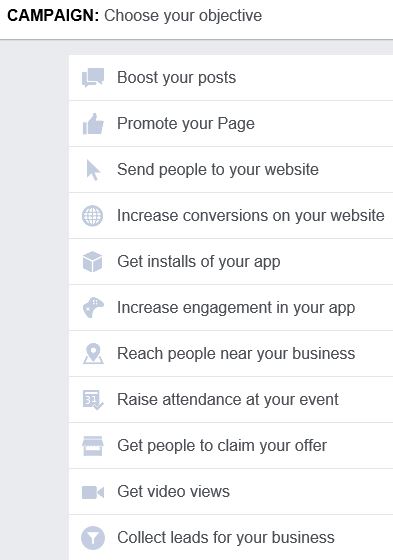
Step 1: Create you Campaign in Facebook Ad Structure
Step 1.1 Choose the Objective on Facebook Ad Structure
This will be the objective of the campaign.
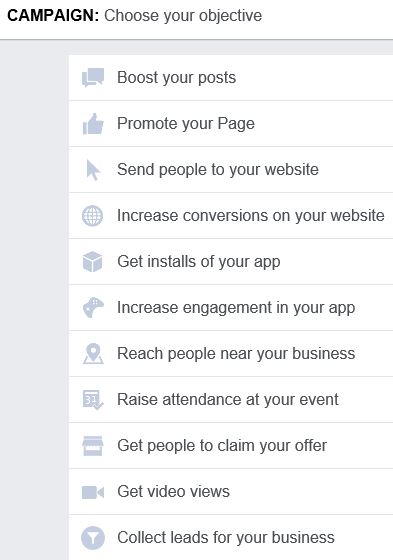
Step 1.2: Enter Objective Details on Facebook Ad Structure
After choosing an objective, you make other selections related to your objective such as entering a website address, selecting a conversion pixel or selecting which event to promote.
In this example, I chose to Boost my post, which has been doing well. You can also rename the Campaign name. Facebook gives it a name by default based on the objectives, but you can change the name to something meaningful to you. Here in this case I must change the name as it is quite generic and does not indicate the post I am boosting.
Step 2: Create your Ad Set
Next, you set up the targeting, bidding and budget for your ad set. Facebook does optimize the ads below the ad sets so the better-performing ads get more of the budget. Be aware that one of your ads may be shown less often. You can manually control the ads below the ad set by turning them on and off as you require.
Step 2.1: Define the audience in the Facebook ad Structure
Use the targeting options available in advert creation or Power Editor to reach the audience that matters to your business. If you know the specific people you want to reach, use demographic options (e.g. location, age, school/university), interests and behaviours to create your audience . These options can be found in the Detailed targeting section of advert creation.
You can choose a narrow or broad audience . An audience that’s more narrowly defined might be better if you want people to take a specific action on Facebook or on your website or app. A broader audience might be better for raising awareness of your business.
Each advert set in your campaign can have a different audience. All of the adverts within an advert set share the same audience.
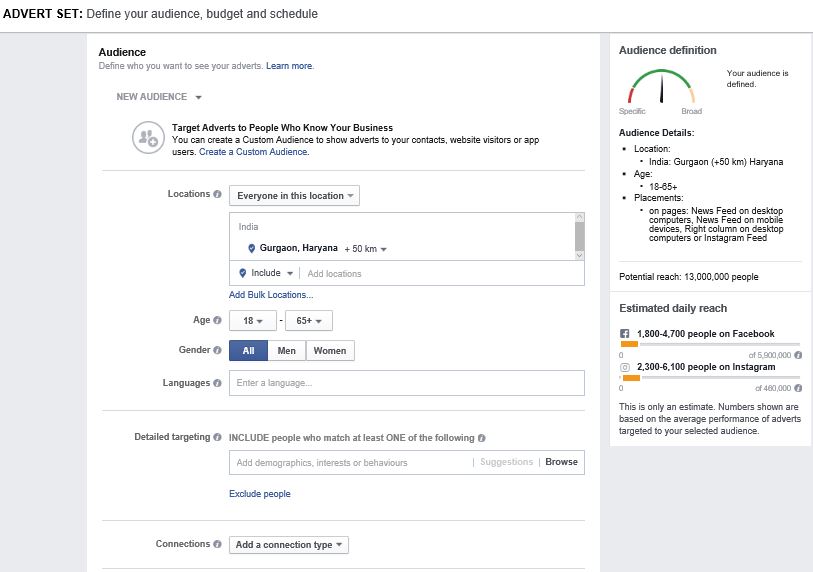
Step 2.2:Define where you want your ad to appear on Facebook
Placements refer to where the ads you create show up. Choosing to run your ads automatically means that your ad will run across Facebook ad network, the Instagram ad placement and the Audience Network.

Running your ads across all ad placements may help you reach more people at less cost. By default, all eligible placements for your ad set will be selected and may include:
-
Mobile News Feed
-
Desktop News Feed
-
Desktop Right Column
-
Audience Network
-
Instagram
When creating your ads, it’s recommended that you select every available ad placement. Selecting every ad placement will allow Facebook’s delivery system to allocate your ads set’s budget based on performance across the placements. If one placement begins performing better (ex, you can reach more of your audience for less on that placement), then the delivery system will automatically allocate more budget to that placement to help you reach more people.
For example, if your ad is reaching more people at less cost on the Instagram placement than Facebook’s Mobile News Feed placement, the delivery system will automatically allocate more of your ad set’s budget to the Instagram placement.
Step 2.3: Define your Budget in Advert Set for your ad to appear on Facebook
For advert sets with automatic bidding, the minimum daily budget is $1.00 USD and must be at least two times your cost per click (CPC) bid. For example, if you have a $1.00 CPC, your daily budget must be at least $2.00.
For advert sets with manual bidding, the minimum daily budget is $1.00 USD and must be at least five times your cost per click (CPC) bid. For example, if you have a $1.00 CPC, your daily budget must be at least $5.00.
Bear in mind that this is different from your account spending limit , which allows you to set an overall spending limit for an entire advert account and helps ensure that all adverts in your account stop running once your account has spent the amount that you’ve set.
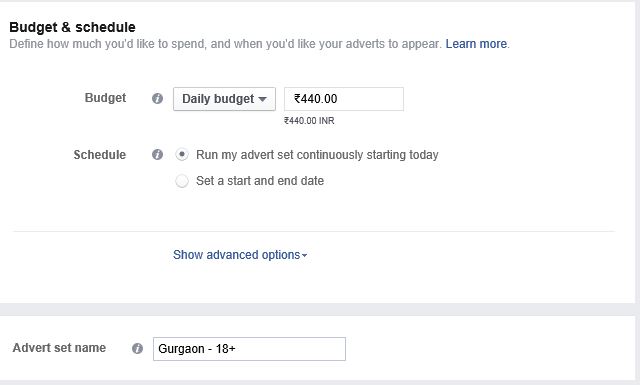
On this section you can also finalise Advert Set name for easy identification.
Step 3: Design the Ad
The last step is to design your ad.
If you’re only going to change the ad image for split testing, you can add multiple images here and multiple ads will be created with the different images. Then Facebook will split test them and optimize the campaign to show the best-performing ad more often.
